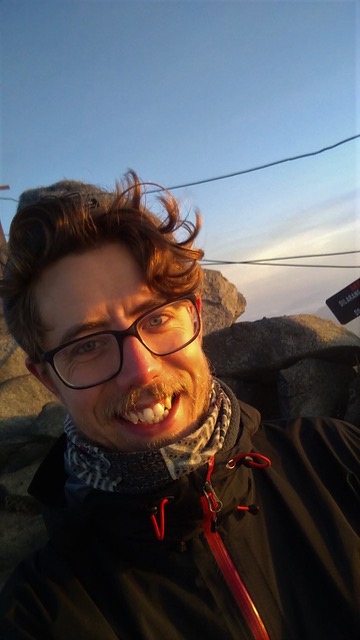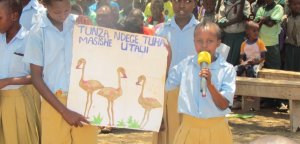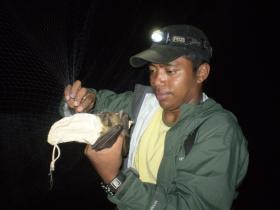by Tapiwa S. Lewis
Congratulations to TBA alumna, Zimbabwean Kudzai Mafuwe (Amani 2013), who has been chosen to participate in the prestigious 2018 Cornell Alliance for Science Global Leadership Fellows Programme at Cornell University in Ithaca, New York. We wish her well on her fellowship.
The Alliance for Science is a communications and training initiative to build a global network of science champions dedicated to promoting access to agricultural innovation. The Alliance is motivated by a passion for achieving justice for the poor. They are committed to defending evidence-based decision-making and they are also driven by the urgency of resolving social and environmental problems.
Let’s take a look at Kudzai’s path to her latest achievement.
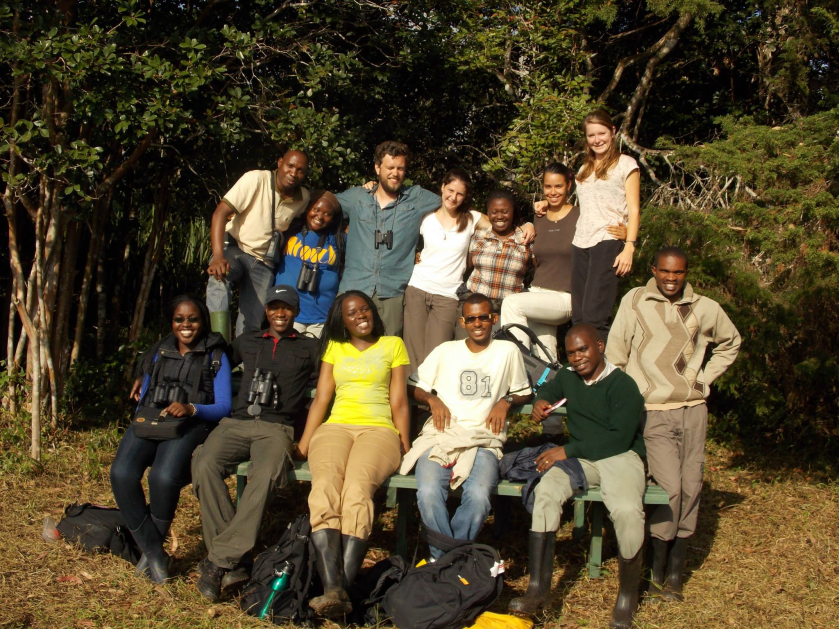
Kudzai attended the TBA field course in Amani in 2013 and then joined 13 other Zimbabwean conservationists who had been trained by the TBA. Determined to increase the capacity of upcoming young Zimbabwean scientists to engage effectively in conservation work in their motherland, Kudzai – along with two other members of this group, Joshua Tsamba and Edwin Tambara – received a TBA small grant to run a networking event. This event – which also served to launch the Zimbabwe TBA Alumni Group – was the subject of a blog post in 2015:https://tbaalumniblog.wordpress.com/2015/03/26/fostering-collaborations-for-biodiversity-conservation/.
The following year the team received another TBA small grant to research the use of insects such as dragonflies as biological indicators for assessing water quality in the Matobo World Heritage Site in Zimbabwe.

Kudzai went on to receive an international grant from The Critical Ecosystem Partnership (CEPF) to conduct similar research in the Eastern Highlands of Zimbabwe. “The experience, connections and recommendations which I made through my experiences with TBA encouraged me to apply for the CEPF grant,” she said. She described the experience and her biggest take away from it:“It was such an exhilarating experience to be able to explore the hidden gems of Zimbabwe and to be able use some of the most sensitive inhabitants of this region’s wetlands to reveal their qualitative status.”
However, Kudzai went on to expound on how disheartening it was to note that habitat destruction, vegetation loss and alluvial mining in the rivers and streams presented the greatest threats to these once pristine environments. She explained how wetlands are an integral part of the ecosystem and their destruction also presented a greater threat, not only to the fish and clean water sources, but also to the people of the communities that rely on these wetlands for their livelihoods.

For a little more background on Kudzai Mafuwe’s career thus far, she is an Entomologist and Ecologist by profession and has worked as a curator and Entomologist for the Natural History Museum of Zimbabwe for the past 6 years.
After the TBA field course, Kudzai went on to complete her M.Sc in Tropical Entomology from the University of Zimbabwe and has received numerous other certificates in Ecology and Conservation, Biodiversity Informatics, and Insect Taxonomy and Systematics. Her research includes the use of biodiversity informatics tools to develop models such as risk maps of invasive pests and synthesizing them into decision tools and information that can be used practically in sustainable agriculture and conservation in Africa.
“When there is an outbreak of invasive pest or an infectious disease spread by insects, there is the need to understand how far and how fast the disease or the pest will spread. This helps us not only to calculate what the current distributions are, but also identify places where these pests or disease vectors might flourish, where they don’t currently exist, and attempt to identify if this maybe as a result of climate change,” says Kudzai.
Kudzai is now recognized on international platforms such as The Global Biodiversity Information Facility (GBIF), an international body which seeks to make Biodiversity Information easily available for conservation, sustainable development and policy decision making around the globe.
https://www.flickr.com/photos/44353813@N02/sets/72157679094083225/

She has also won numerous travel awards to represent Zimbabwe at regional and international workshops and conferences, such as The Biodiversity Standards (TDWG) 2015 and 2017 conferences where she presented some of her work in Zimbabwe.
Kudzai has since become the coordinator for two projects funded by The European Union and GBIF in Africa, in collaboration with museums in South Africa, Botswana, Mozambique, Madagascar and Kenya with an aim to unleash the potential of insects in conservation and sustainability research on a regional level. She also acts as a mentor for other GBIF funded projects in Zimbabwe where she guides the teams in cleaning, publishing and analyzing datasets for use in policy decision-making and sustainable development.

Kudzai explains why the opportunity to be part of The Global Leadership Fellows Programme at Cornell University is so important. “Scientists are often accused of writing a lot of jargon that is not always understandable or interesting to read. We do conduct a lot of research and collect a lot of data in our institution, but the most affected people barely understand the work.” She gave an example of how farmers can definitely benefit from some of the studies she has done and will do in the future. She talked about how during her research she collects specimens that farmers can use to identify the pests attacking their crops, and also to seek assistance before an outbreak occurs. “So, it is not just about conducting research and collecting lots of data but there is the need to synthesize this information into packages and tools that even a non-scientist can understand and comprehend.”
Upon completion of the programme, Kudzai will be a Fellow and a member of an international cohort of forward-looking communicators, uniquely equipped to promote the evidence-based decision-making around global issues such as food security, productive agricultural systems, climate change and environmental sustainability and agricultural growth.
Kudzai is excited about her new learning opportunities:”It is interesting to learn about the various bio-techniques that are now being implemented in regards to integrated pest management, such as producing pest resistant crops and sterilizing insects pests and releasing them into the wild to control pest populations,” she said.
“Some of the things I have learnt here have only ever been in theory up to this point, so it is quite an eye-opening experience to be getting such a first-hand experience and finally seeing how the processes actually work.” She also emphasized how it is one thing to learn about it, but there is also a need to take back the skills that she we will pick up from her studies and use them to spearhead changes within her community.
“I am surrounded by a team of motivated and driven individuals who are ready to ensure global access to life-improving agricultural innovations, with such great people in my network, the sky is indeed the limit,” she said.
We have no doubt that Kudzai, will represent Zimbabwe and Africa with passion and dedication, her previous work has shown that she is committed to promoting the sustainability concept through various environmental ways.
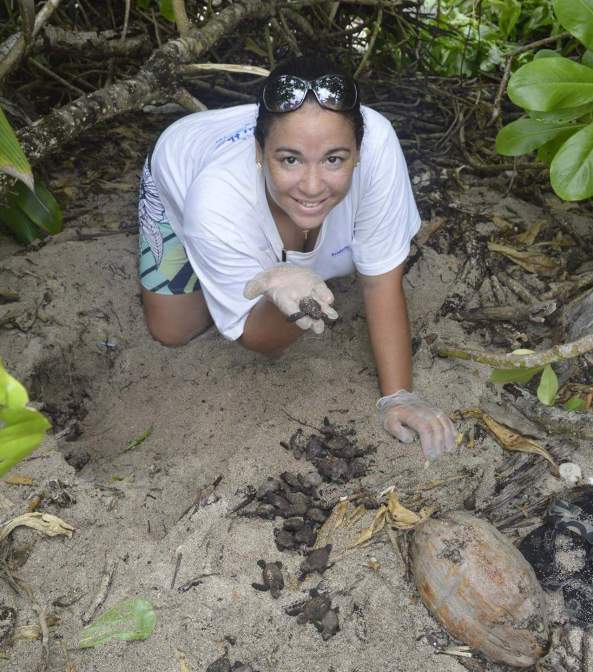

 Through the TBA site exchanges, I have developed a greater understanding on corals and the role they play in the marine environment. This has also helped me to better create the link between all the different species in the ecosystem, understand more about the function of interdependence and the effects of symbiosis. I have developed into a more proactive member within my organization, continuously passing on knowledge gathered to my peers.
Through the TBA site exchanges, I have developed a greater understanding on corals and the role they play in the marine environment. This has also helped me to better create the link between all the different species in the ecosystem, understand more about the function of interdependence and the effects of symbiosis. I have developed into a more proactive member within my organization, continuously passing on knowledge gathered to my peers.



